The Lonedale Operator, released on March 23, 1911, is another of the short films that D.W. Griffith created for the Biograph Company, and the first of his films I’ve watched that doesn’t feature Florence Lawrence. This time the lead actress is Blanche Sweet, and she is the star of the picture. Lawrence was always in some sort of co-starring or secondary role.
Sweet plays “The Telegrapher,” daughter of “The Lonedale Operator,” so called because he runs the train station in the town of Lonedale, who takes over for her father one day when he falls ill. She becomes the Lonedale operator for the day, which also happens to be the day the payroll for the local mine is delivered. Two tramps set their sights on it. Our heroine realizes they are trying to break into the station and steal the payroll, so she locks the doors and telegraphs ahead to the next station for help. At first, no response. Griffith cuts to the other station where we see the operator fast asleep. Oh no! Fortunately, he wakes up and receives her cry for help. Back in Lonedale, Sweet passes out, no doubt from the exertion of tapping the telegraph key. Luckily, her boyfriend, a train engineer played by Francis J. Grandon, is given the message and he speeds in her direction to save the day. But he isn’t in time! The tramps have broken down the front door and are about to bust through the office door.
Thinking quickly, Sweet turns the light out before the tramps access the room, and she holds them at bay with what appears to be a gun. Except, we saw her turn down her father’s offer of a gun earlier in the film? What is going on? We find out when her boyfriend arrives. The lights go on, and she shows them all that it was a steel wrench all along! The tramps, acknowledging that they were outwitted, doff their hats and bow to her as they are led off to jail. The damsel in distress has saved herself!
Like the other Griffith films I watched, this one is noticeably better than much of what I’ve seen so far. One early scene in particular stands out, where the camera focuses on a tree’s branch, and its leaves, only to have Sweet and Grandon walk into the scene, under the branch, and into the foreground. They stop in frame and have a conversation. This is mundane by today’s standards, but I hadn’t seen anything quite that clever camera-wise to this point. This is also the first film I recall with a close-up shot, which was employed to show the audience that Sweet had been holding a wrench rather than a gun.
And in general, the film is more complex than previous ones, cutting back and forth between a number of simultaneous actions and locations. Tints were also used to keep the viewers informed as to where scenes were taking place, likely because audiences at that time weren’t used to seeing two things happening at once. Once Sweet is in the office, outdoor shots are tinted blue, and when her would-be rescuers are en route, scenes inside the train are tinted red.
I don’t own a copy of this film, but as with most all early silent films, it is in the public domain. I watched it on YouTube.
Next I’m watching: Desdemona [1912], directed by August Blom.






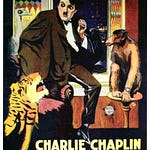
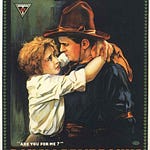
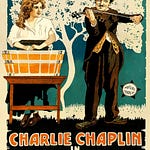

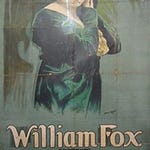
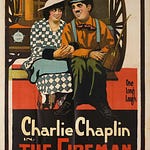

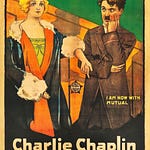
Share this post